
STORY BY JON D. CLARKE
Fans rejoice.
ReBoot, a classic computer-animated TV show from the ‘90s, will be reimagined into a new series, just in time for the original show’s 20th anniversary.
The first ever half-hour computer-animated TV series, it was about characters living inside a computer called Mainframe, and a guardian program named Bob who defended the city from viruses and other threats.
With a considerable fan base and many petition sites devoted to bringing back the television show, the remake will be welcomed by many fans, but Gavin Blair, one of the creators of ReBoot, has mixed feelings about the new series.
“For the fans, who are wonderful and devoted and passionate and who have stood by the show for so long, it’s great to see the show come back,” said Blair, 52, from Vancouver. “But to me personally, to not be in control is … very, very strange. I’ve likened it to watching someone else raise your child, a child you love deeply and who you had so many good, fun years with, but now you can’t have any contact with.”
The idea for ReBoot began in 1984, with animators Ian Pearson and Blair, who had worked together on the Dire Straights’ Money for Nothing music video.
The technology of the time just couldn’t match Pearson and Blair’s imaginations – early concepts of Bob, the show’s protagonist, looked like a microphone on a surfboard, says animator Scott Baltjes, 50, who worked on ReBoot from the sixth episode onward.
Ten years after the idea was formed, Pearson and Blair created ReBoot Inc. in 1994, and were ready to build the show’s legacy from the ground up.
In June of that year they picked an application portfolio out of their growing pile, looked on impressed at what they saw, and said, “This guy is too good.”
There was no way he was still available for hire, so into the rejection pile it drifted.
The name on the submission was Scott Baltjes, Sheridan grad.
The summer of 1994 was a hard one.
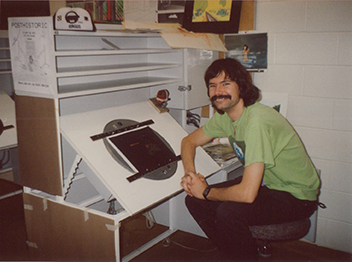
Baltjes, who grew up on an Angus cattle farm in Wainfleet, Ont., had just graduated from Sheridan’s Computer Animation program.
He spent previous years studying through Sheridan’s Classical Animation program as well, but made the move to 3D on a professor’s advice.
The result of work from both programs was called Post Historic, the first 2D/3D animation hybrid produced by a Sheridan grad.
Hanna-Barbera, a major producer at the time, even contacted him to buy the video and concepts for $3,600.
“Lock, stock and barrel,” said Baltjes. “That works out to be about $1 an hour,” he told them. “That’s not going to pay my student loan.”
He was in the spotlight – a top grad, and second choice for major studios like Pixar and Disney, but he would learn that second choice wasn’t good enough.
After applying to every animation firm he could with no luck, ReBoot Inc. among them, Baltjes found himself unemployed.
So he ended up picking fruit in Ontario during one of the worst summers for crops he’d ever seen.
“All 40 acres of peaches in one day, that’s how terrible it was,” Baltjes said of one farm where he worked.
At the end of the summer he finally got a call from Pixar to work on Toy Story, but the package they sent him in the mail never arrived.
Anxious, he made a string of frenzied phone calls back to the studio, but it was too late: his contact had left on a six-month motorcycle expedition in southeast Asia – and the job on Toy Story slipped through his fingers.
Dejected, he looked at the list of animation firms he applied to in the spring and found one unchecked: ReBoot Inc.
He didn’t realize it at the time, but he already sent them an application in spring – he just forgot to check them off the list.
And it was this stroke of fate that took him to Vancouver for work on ReBoot.
“I didn’t have a computer,” said Baltjes. “I lived on a farm out in the middle of the sticks, so I was worried that I’d got kind of rusty since the six months that I had left Sheridan.”
Landing in Vancouver, he met with a man holding his name on a card and soon after he was riding shotgun, feet propped up on the dashboard in a rusty, beat-up old Volkswagen van with no floor.
They drove through the ritzy, mansion-lined roads of Granville Street, crossed a bridge into downtown Vancouver, and into an area full of rundown hotels and struggling pawnshops.
“Oh man,” Baltjes thought to himself. “What kind of Sodom and Gomorrah have I gotten myself into?”
From there, he waited almost 10 hours for his interview, subsisting on nothing but a single can of Chef Boyardee Beefaroni.
When the time came, Baltjes and the entire crew of 25 ReBoot Inc. employees retreated to the interview locale.
They went to Cecil’s, an “excellent bar,” with the “best burger in Vancouver,” said Blair. “Plus, yes, there just happened to be an apparently endless stream of gorgeous young ladies onstage who would dance and remove their clothing.”
“It was the most unexpected thing,” said Baltjes. “But I did get a free meal off of it.”
The strip bar was like a second office for ReBoot Inc.
They got plenty of work done there, including system design, interviews and business meetings, one with a group of suited Asian businessmen and their interpreter.
It was apparent to Baltjes from the get-go that ReBoot Inc. was a tight-knit group that liked to have fun.
Hockey, office Nerf gun fights and frequent visits to Cecil’s were the norm.
Everyone had nicknames, immortalized on the backs of their hockey jerseys: Blair’s was “Mr. Sweary,” given to him after he cursed during a phone interview with Kidscreen, a magazine about children’s TV.
Soon enough Baltjes earned his, too.
Frequently exploring the streets of Vancouver over his lunch hour and stopping to eat against buildings, passersby often mistook him for a homeless person and tossed change at him.
His new nickname followed him from the office to the rink: the back of his jersey read “Sparechange 63.”
Back at the office, Baltjes first worked on Enzo the Smart and when the credits rolled he pointed at his name and shouted “Mine!”
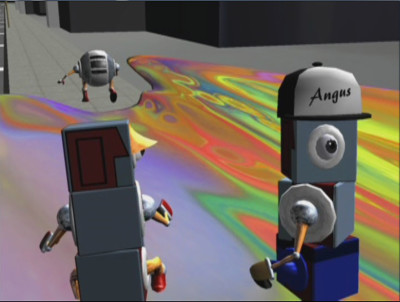
“I had arrived,” said Baltjes.
ReBoot gained a reputation for in-jokes and cultural references – it was peppered with computer puns and nods to The X-Files, Jurassic Park, and William Shatner, among others.
But ABC, the network on which ReBoot aired for the first two seasons, was adamant about censoring some material.
An episode about hockey was scrapped over the term “tonsil hockey” and ReBoot Inc. had to remove a jockstrap from one episode. But the most frequent intrusion on the show was stylistic: female characters, including one of the main characters Dot, were forbidden to have sculpted bodies and the result was “the mono-boob,” a cylindrical stand-in for realistic breasts.
“There had always been two versions of ReBoot,” says Baltjes. “The ABC version and everyone else’s.”
“I do remember finding it ironic that we tried to put strong female characters on screen and we still got stick for it, because we made them attractive and gave them breasts, I guess,” said Blair.
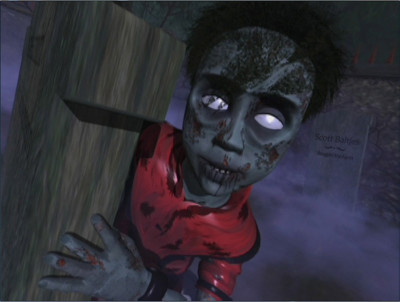
Shortly after Baltjes was hired, the Women’s Televison Network did a story on ReBoot that tried to make ReBoot Inc. look like “sleaze peddlers,” said Baltjes.
According to Baltjes and Blair, when asked what the difference was between Barbie and Dot, Pearson said, “Barbie would say, ‘let’s go shopping.’ Dot would own the mall.”
When Disney purchased ABC in 1996, the show was dropped and the creators bought back their majority share.
ReBoot Inc. became Mainframe Entertainment Inc. and now the creators had the final say.
“Dot lost her mono-boob,” said Baltjes. “Her breasts were now in stereo.”
The show took a darker turn, dragging supporting character Enzo into the spotlight, and transforming him from a naive child with good intentions to an aloof and distinctively tough renegade.
Baltjes stopped working on ReBoot after season three, however, and it was from there that the show slipped out of its creators’ hands and was passed on to a new development team for the fourth and final season.
From there, Baltjes worked on Stewart Little 3 and Barbie and the Magic of Pegasus.
“Of all the (Barbie movies) that Mainframe did,” said Baltjes, “it’s definitely the best one.”
But the end of Barbie marked his final moments at Mainframe and before long Baltjes was laid off indefinitely.
Packing up his Muybridge animation books, Playmobil pirate ship and Angus cap, Baltjes had no idea where he’d be going next.
The news in the city was bad everywhere as the animation industry was shedding jobs.
“It was looking like two or three years before it would ever pick up again,” said Baltjes.
Possessions in both arms, he stood unemployed in an empty condo, took stock of the situation and thought one word: “Crap.”
A lot has happened since: Baltjes travelled across the country a few times to help with family and to pick up animation jobs wherever he could.
Eventually he took a contract in Halifax for Bo on the Go by DHX Media, and still lives there now, married, and waiting for production on DHX Media’s Inspector Gadget to begin in January.
As for ReBoot, it ended after two direct-to-video movies that were also cut to make up episodes for season four.
Eventually, Baltjes came to realize the extent of ReBoot fandom firsthand.
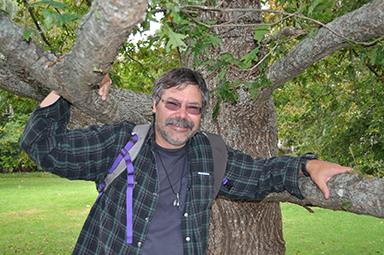
“It’s certainly bigger than I was expecting,” said Baltjes.
In 2012, he attended a sci-fi convention in Vancouver where he could catch up with some of the people from his past at a ReBoot reunion.
The auditorium was packed with “a couple hundred people at least,” all dressed up as characters from ReBoot, and after the convention, he caught up with 16 people from the original team over drinks.
The reimagining of ReBoot has no official release date yet, but Baltjes, like Blair, has mixed feelings about the whole thing.
“I look forward to it coming back, but yeah, I’m a little concerned as to what they’re going to do with it,” said Baltjes, and took a long sigh over the phone.
“It would be great if I was actually working on it,” he said.
“But I won’t be.”
Fast Forward: The Making of ReBoot is a twenty minute documentary featuring many of the original crew from ReBoot Inc.and a ton of other random bits of ReBoot info: watch it here. Baltjes was away when this was filmed, though, so you won’t find him in any footage.
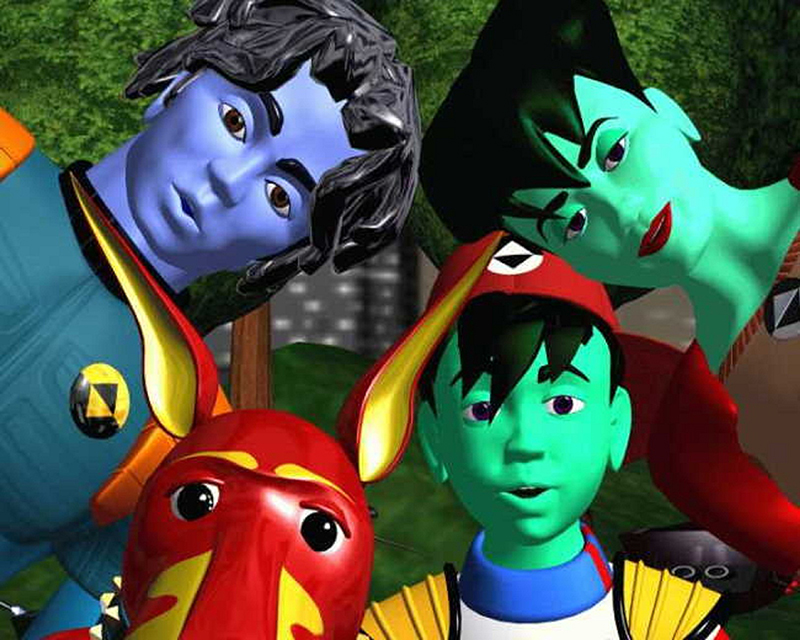
Comments
3 responses to “Creators of the original ReBoot recall the past”
Hi, I was just wondering… which date was this article published exactly? For some reason, it seems none of your articles have the original publication date listed.
This story was published on Nov. 19.
Hi, I was just wondering… which date was this article published exactly? For some reason, it seems none of your articles have the original publication date listed.